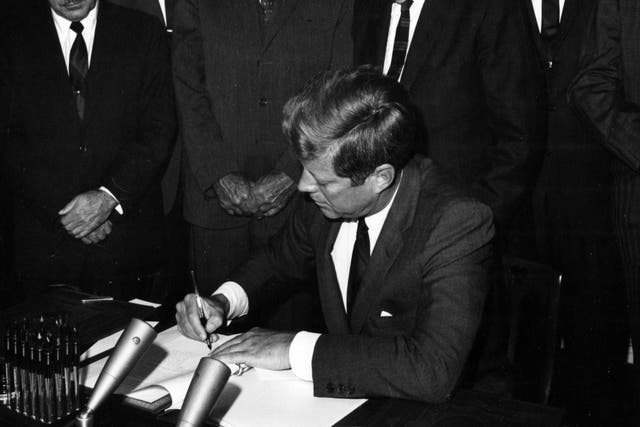

On August 5, 1963, representatives of the United States, Soviet Union and Great Britain signed the Limited Nuclear Test Ban Treaty, which prohibited the testing of nuclear weapons in outer space, underwater or in the atmosphere. The treaty, which President John F. Kennedy signed less than three months before his assassination, was hailed as an important first step toward the control of nuclear weapons.
Discussions between the United States and the Soviet Union concerning a ban on nuclear testing began in the mid-1950s. Officials from both nations came to believe that the nuclear arms race was reaching a dangerous level. In addition, public protest against the atmospheric testing of nuclear weapons was gaining strength. Nevertheless, talks between the two nations (later joined by Great Britain) dragged on for years, usually collapsing when the issue of verification was raised. The Americans and British wanted on-site inspections, something the Soviets vehemently opposed. In 1960, the three sides seemed close to an agreement, but the downing of an American spy plane over the Soviet Union in May of that year brought negotiations to an end.